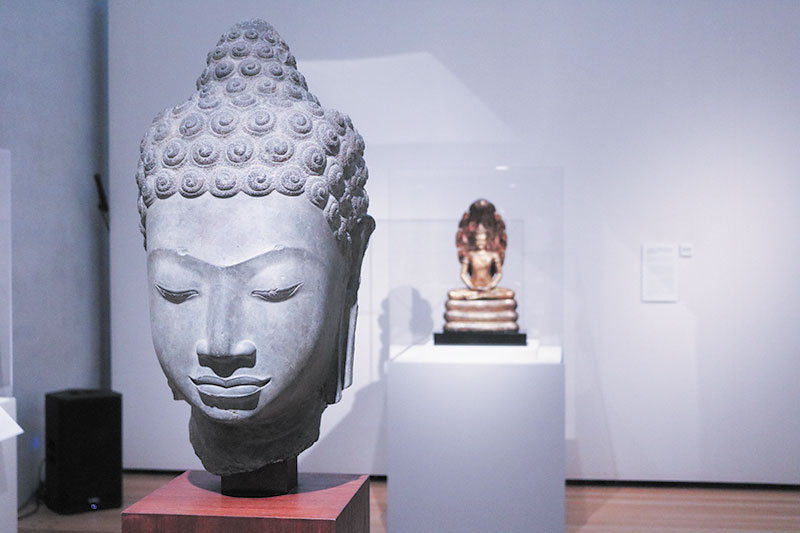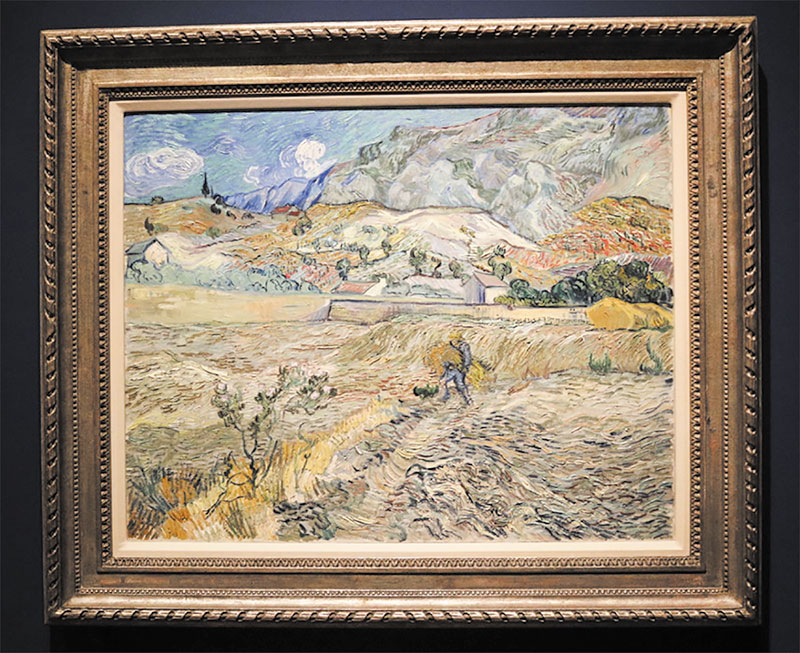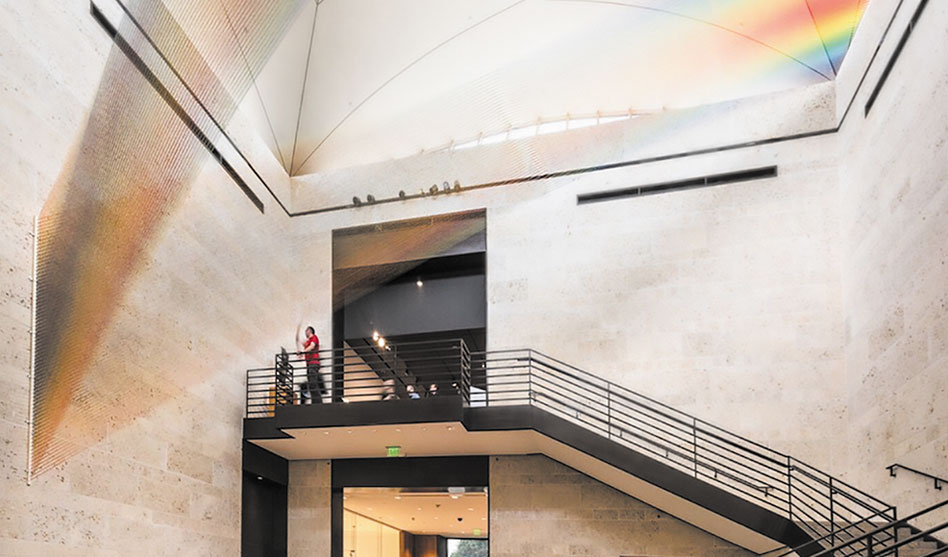Gabriel Dawe’s Plexus no. 34 at the Amon Carter Museum
From Queen Nefertari to Van Gogh, the local art scene offered a wide variety of well-attended shows
DAVID TAFFET | Senior Staff Writer
taffet@dallasvoice.com
After closing for the pandemic, art museums in the area came roaring back with blockbuster exhibitions.The Kimbell Art Museum in Fort Worth kicked the year off with its Queen Nefertari’s Egypt blockbuster that portrayed ancient Egypt as more progressive, in some ways, than Texas.
Under Egyptian law then, women were considered equal. Through artifacts that are surprisingly well preserved, we learn that women were allowed to own property, own businesses and bring cases to court. In Texas, a woman couldn’t own property without her husband’s permission well into the 1970s. And in Egypt, women could serve as priestesses, something still denied women in many modern denominations.
Nefertari was the queen of Ramesses II, Egypt’s most prolific builder, and the exhibit included hundreds of artifacts from her tomb.

From the Kimbell’s Buddah Shiva Lotus Dragon exhibit (David Taffet/Dallas Voice)
The Kimbell followed up the Queen with Buddha, Shiva, Lotus, Dragon, pieces drawn from the collection of Asian art amassed by the John D. Rockefellers. The only way to describe the quality of items shown in this exhibition is that on display was the finest example of that particular piece of glassware, pottery or sculpture known.
The museum ended the year with its encyclopedic exhibit Turner’s Modern World. With more than 100 paintings included, the exhibit traced this first modern artist’s career in a way he had never been studied before. From Fort Worth, the collection moves to the Tate in London.
The Dallas Museum of Art had a great year with a small Frida Kahlo exhibit, a first-of-its kind Van Gogh exhibit and a stunning Juan Gris show. With just a few pieces of Kahlo’s art on display, lines formed to see the wide variety of her work from still life to cityscape to portrait, pencil sketch to oils represented in just a few examples.
Hopefully, the DMA will share more of the work of this LGBTQ community favorite.
The current Van Gogh show presents a variety of the painter’s olive grove canvasses created during the last year-and-a-half of the artist’s life. The show’s curator commented how surprised she was that these paintings had never been studied together as a group or given their own show before. And for real art nerds like me, what she learned through years studying these canvasses was how light affected the works. As vibrant as the colors remain today, they are faded compared to how they originally went on the canvases.

Van-Gogh’s-Landscape-at-Saint-Remy-on-exhibit-at-the-Dallas-Museum-of-Art
Finally, the DMA opened the year with its Juan Gris exhibit. One of the four pillars of cubism, along with Picasso, Braque and Leger, this was the first major retrospective of the artist’s work in 35 years. What set Gris apart from the other cubists is that he was not an abstract painter. His subjects were very recognizable, making his work more accessible than that of the other great cubists.
Across the street, the Nasher Sculpture Center ends its year with the first museum presentation of Carol Bove’s steel sculptures. Two of the nine pieces on exhibit were created especially for the exhibition.
At the Amon Carter Museum of American Art, Imagined Realism: Scott and Stuart Gentling remains on exhibit through Jan. 9. The 80-foot mural on the dome at Bass Hall was done by the Fort Worth brothers. Here’s a chance to see the variety of work produced by these talented local artists.
Also on view is Gabriel Dawe’s Plexus no. 34. Commissioned for the Carter, the museum notes that another in his series of rainbow-colored thread works is installed at Resource Center. Interesting to compare how this soaring piece reflects light and appears even more ethereal than even the centerpiece of Resource Center’s art collection and how the artist’s work has developed over the last few years.
The Modern began the year with gay artist Mark Bradford. His show studied his use of end papers, which protect hair from burning while using curlers to create permanent waves, in his multi-media creations. Coming to the Modern in May, Women Painting Women will feature 50 portraits from 46 artists from the 1960s to the present. Women have painted for centuries, but have never been given equal exposure by galleries or museums. This show promises to begin doing something about that.













